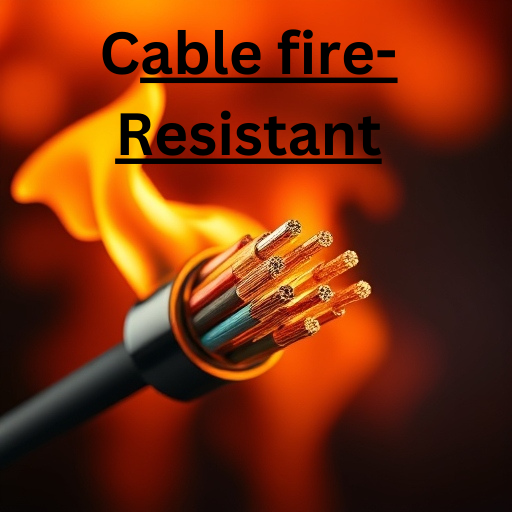How do you make a cable fire resistant?
If you want to ensure the safety of your electrical cables and prevent the risk of fires, it is essential to make them fire-resistant. Fire-resistant cables are specifically designed to withstand high temperatures and prevent the spread of fire. In this article, we will explore the different ways you can make a cable fire-resistant.
1. Use Fire-Resistant Materials:
One of the key factors in making a cable fire-resistant is the choice of materials used in its construction. Fire-resistant cables are typically insulated with materials such as mineral insulation, mica tape, or silicone rubber. These materials have a high melting point and do not contribute to the fire’s spread.
2. Insulate with Fire-Resistant Jackets:
To enhance the fire resistance of a cable, it is crucial to provide it with a fire-resistant jacket or sheath. The jacket acts as an additional layer of protection, preventing any external flames from reaching the cable’s core and causing it to catch fire. Common fire-resistant jacket materials include thermoset compounds or halogen-free materials.
3. Opt for Non-Flammable Fillers:
Cables can contain fillers between the conductor and insulation layers. Using non-flammable fillers, such as ceramic powders or fire-resistant gels, can significantly improve a cable’s fire resistance. These fillers create a barrier and prevent the spread of fire along the cable’s length.
4. Employ Fire-Resistant Shielding:
Shielding is often required in cables to protect against electromagnetic interference. By using fire-resistant shielding materials, such as aluminum-mylar tape or copper tape with a non-flammable coating, you can enhance the fire resistance of the cable. The shielding acts as an extra layer of protection, reducing the risk of fire propagation.
5. Comply with Fire Safety Regulations:
When manufacturing or installing fire-resistant cables, it is vital to adhere to relevant fire safety regulations and standards. Different countries and regions may have specific guidelines and certifications for fire-resistant cables. Ensure that the cables you choose meet the required standards to ensure optimal fire safety.
6. Conduct Fire Resistance Testing:
Before using fire-resistant cables in critical applications, it is essential to perform fire-resistance testing. These tests evaluate the cable’s ability to withstand high temperatures and prevent the spread of fire. Various tests, such as the flame propagation test or the fire survival test, can determine the cable’s fire-resistant properties.
In conclusion, making a cable fire-resistant involves using fire-resistant materials, insulating with fire-resistant jackets, employing non-flammable fillers, utilizing fire-resistant shielding, complying with fire safety regulations, and conducting fire-resistance testing. By following these steps, you can ensure the safety of your electrical installations and minimize the risk of fires caused by cables. Remember, prioritizing fire safety is crucial when it comes to electrical systems to protect lives and property.






